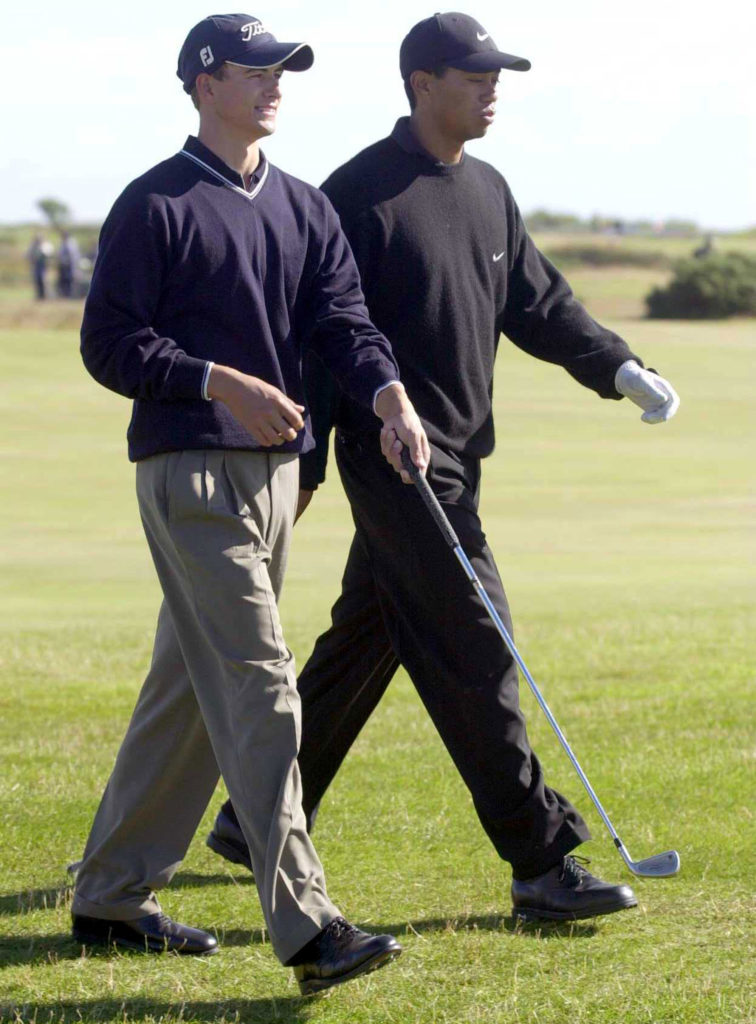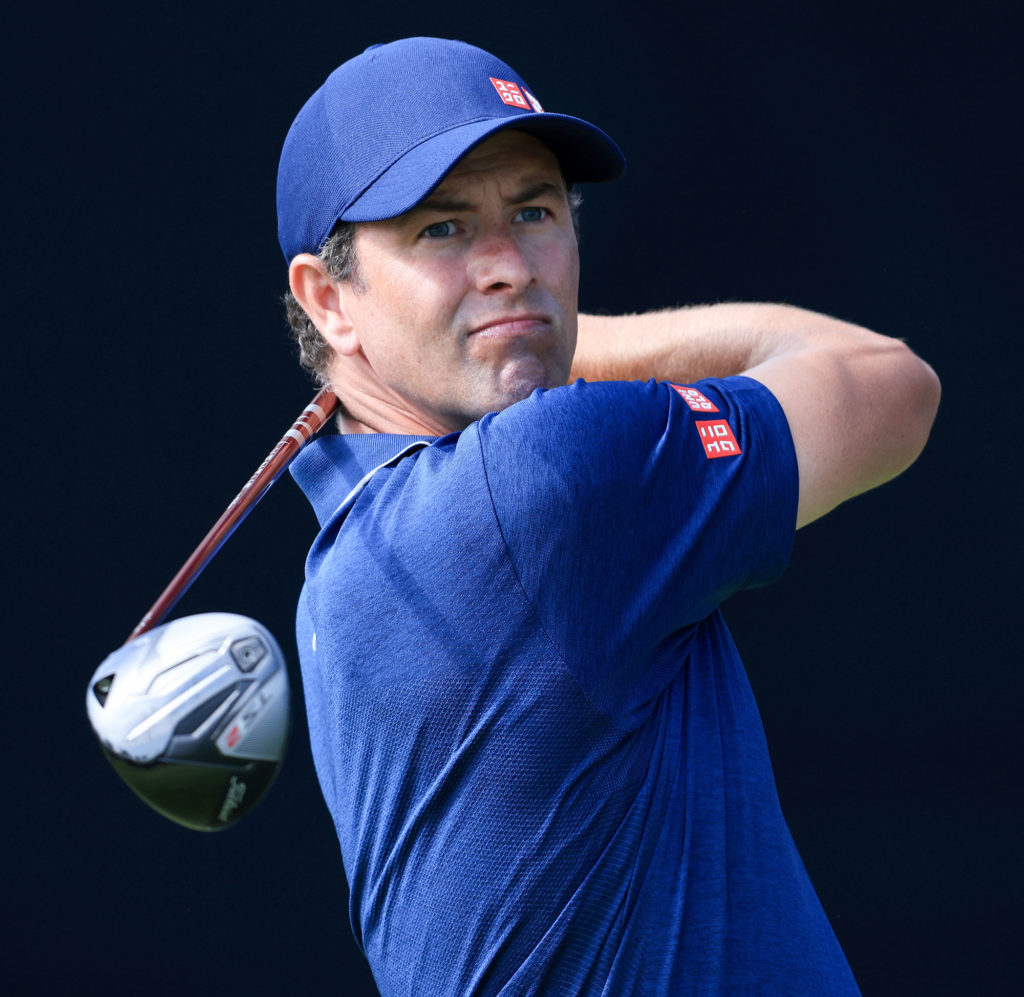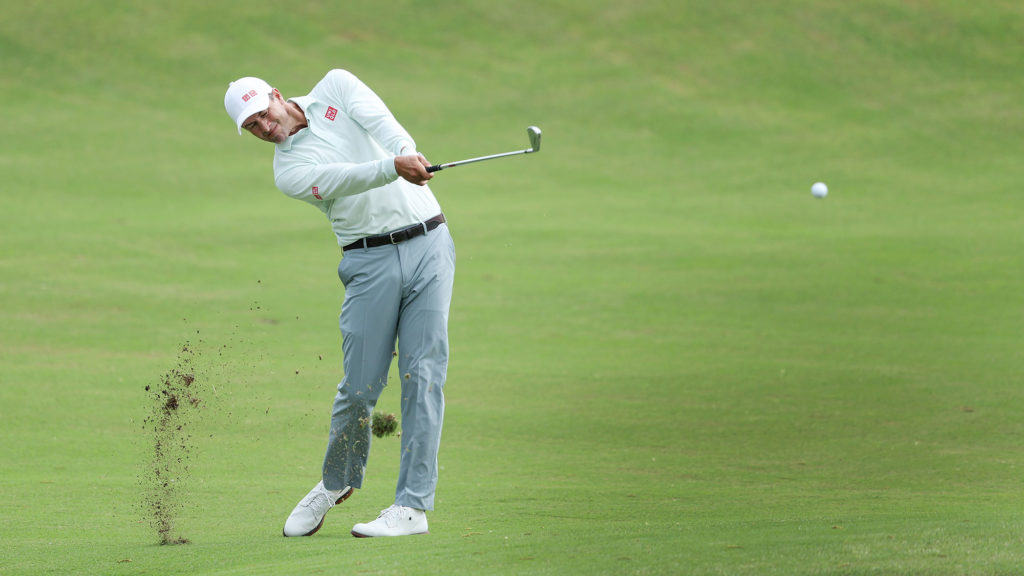The 2015 Open Championship at St Andrews saw Adam Scott slip for a fourth straight year in his quest to win the claret jug. Now older, wiser and with a sharper short game, he’s better equipped to seize the moment.
Adam Scott remembers the 2000 Open Championship at St Andrews like it was yesterday. It wasn’t his first trip to the famous Scottish links – that came in 1997 as an amateur – but it was his debut in golf’s oldest Major. He’d just turned 20 years of age.
For the special occasion, Scott’s then coach, Butch Harmon, had organised a practice round with Tiger Woods, who Harmon also coached at the time.

“Obviously, that was Tiger’s first Open Championship victory,” Scott, now on the cusp of turning 42, tells Australian Golf Digest, referencing Woods’ completion of the career Grand Slam. “It stands out in everyone’s mind how great Tiger played that week, and for me it’s special because I played two practice rounds with him. I’d never seen anyone swing a golf club like that or have that much control over the ball.”
For the second of those two practice round with Woods, five-time Open Championship winner Peter Thomson joined the group for a walk. The iconic Australian golfer had taken an interest in mentoring Scott, and he was close friends with Woods’ then caddie, Steve Williams. Scott was thrilled, until the famously straight-shooting Thomson offered his thoughts on the young Queenslander.
“He started critiquing my game… From memory, he was telling me I hit it too high with too much spin and I’d have little chance of competing at The Open unless I flighted it down,” Scott recalls with a laugh. “He didn’t care if you were 20 years old or Tiger Woods, he was going to give it to you straight. I think that was just his way. But that’s a really strong memory for me and it’s the sort of memory that makes you so excited to return to St Andrews for The Open.”

An ugly finish
The 2015 Open – the most recent time the championship was held at St Andrews – still stings for Scott. He began the final day in sensational form, going out in 31 and taking a share of the lead with a birdie at the seventh hole. He was still tied for the lead early on the back nine. But in the cold rain and wind, he began to fall apart. He will never forget the double-bogey-6 at the 18th, but the damage was already done when, at the par-5 14th, his one-foot par putt barely touched the hole. He faded to a tie for 10th.
“Yeah, that was a tough one,” Scott recalls. “I was making a really good run on Sunday. I got off to a fast start and I was like six-under through 10 or 11 holes. I was right in the mix, and I had been right in the mix for four years on Sundays at The Open, so it was really disappointing to capitulate.”
Scott refers to a hot stretch at The Open in which he feels he should have won at least one claret jug. At the 2012 Open, Scott coughed up a four-shot lead with four holes to play at Royal Lytham en route to a devastating runner-up to Ernie Els. Scott also recorded two top-fives in 2013 and 2014 before the 2015 edition. “For a while there, I certainly was really in tune with playing links golf and I definitely had a lot of chances during that period,” Scott laments.
Scott couldn’t help but envy the eventual 2015 Open champion, Zach Johnson, who added The Open at St Andrews to his 2007 Masters triumph at Augusta National. Scott had also won the Masters, in 2013, and wanted to join the illustrious group of golfers to have claimed a Masters and an Open at St Andrews in their career.

Looking ahead
Scott feels like a more complete player – and better equipped to win this month’s Open at St Andrews – than he was in 2015. That may seem far-fetched, or foolishly optimistic, given how seven years ago Scott was ranked 11th in the world, was 35 years old and coming off a fourth placing at the US Open. But in 2015, putting was Scott’s Achilles heel. He was ranked 157th for strokes gained in putting on the PGA Tour. It often deserted him when he was trying to covert birdie putts after world-class drives and approach shots. Now, though, Scott ranks as the 24th-best putter on the PGA Tour. His overall short game is more wholesome given he has a wider variety of short-game shots than seven years ago.
“I think my game has continued to evolve from 2015,” Scott says. “There’s no doubt putting is now the strength of my game. Over the past few years, my short game has improved 100 per cent and I feel like I have a better understanding of my swing in general. Everything is in a good spot. I feel like I am a better golfer than I was in 2015.”
Scott has also started driving the ball better this year after several years of struggles off the tee. He has ditched the Titleist driver and fairway woods in favour of TaylorMade’s Stealth models. That’s given him more confidence to hit fairways. Last month at Jack Nicklaus’ Memorial Tournament, Scott also did away with Titleist’s irons after using them his entire career, choosing to put in the bag some custom irons made by Japanese clubmaker Miura stamped with his logo.
Scott is determined to contend in a Major this year after a disappointing first half of the Majors season. He was a non-factor at Augusta, where he tied for 48th and he missed the cut at the PGA Championship at Southern Hills. Scott isn’t in poor form; he began the year with two top-10s on the DP World Tour’s Middle East Swing and then bagged another two on the PGA Tour. But he’s stalling at the Majors and is desperate to get going.
“The Majors this year have been disappointing to not have performed better in the first two,” Scott says. “My game isn’t bad, so I’m not reading a lot into it or worrying that my game has been exposed. I don’t think that’s the case at all. I think the critical part for me is just being able to find the focus or the execution that is required from Thursday to Sunday at Majors. I think that’s what’s been missing. I need 18 holes a day of focus and to not make silly errors which have been incredibly costly, like a triple-bogey at the Masters and a quadruple-bogey at the PGA. It’s just incredibly hard to recover from that at Major-championship level.”
Scott won’t deviate from his usual preparation for The Open, which is to head to the host course 10 days before the championship and study the layout and conditions. That’s because he likes to look for any possible advantage, but it’s also because he’s a golf tragic, like the rest of us, and loves playing the great courses of the world. Given that Scott is now based in Switzerland, and closer to Scotland than his previous home base of the Bahamas, he will do at least one scouting trip to St Andrews and then return for Open week.

“I definitely will spend some time there before The Open, but it may not be all in one batch,” he says. “I may go for a couple of trips. Just being a lover of golf, if there’s the opportunity to play St Andrews when it’s closed to the public then I might try to take advantage of that a couple of times. And even though I know the course well, it’s such a difficult course to have the mental picture of where everything is placed. If you were to quiz me now about every hole’s layout and features, I’d forget so many bunkers. It does need some studying because you don’t see the sightline from a lot of the tees. Even though it’s flat, the bunkers are well hidden; you have to be confident standing on the tee that you’ve got the correct line.”
More than anything, Scott will be hoping his creative side will be brought out by the old links. He wants to tap into whatever magic some of the greats of golf have been able to access when playing The Open at St Andrews to rise to another level – Woods, Thomson, Nicklaus, Nick Faldo and Seve Ballesteros among others.
“There is an energy about the Old Course and about the town of St Andrews,” Scott says. “It’s the birthplace of golf. We play an old game steeped in history. And it all started right there at St Andrews. There is added meaning at St Andrews for a tour player. Some people feel there’s something spiritual about St Andrews and I agree with that. Everything about St Andrews is different; even though it’s a links, it’s unlike any other links we play.
“It will be the pinnacle of the golf season this year. Everybody knows it. And to use the best example, when Tiger focused on certain things he wanted, he was able to lift his game to another level. He did it twice at St Andrews (in 2000 and 2005). When the best players in the world come to St Andrews this month, believing they’re going to win, one of them will lift their game to the level they need to. Hopefully it’s me.”
What I’ll work on for St Andrews

‘Chippy’ iron shots
I like to work on a chippy, low shot that scuttles along the ground. Running it up from 150 metres – the short of shot that if you had enough power in a putter, you would putt it.
I’ll even practise hitting a 3-iron and banging it along the ground just so it’s not a foreign shot if I need it. If the winds really get up and you’ve got 180 yards into the 17th green at St Andrews, chipping a 5-iron or a 4-iron along the ground that runs to the front of the green is a good play that could save an important par.

Creativity
In the weeks leading up to St Andrews I’ll give myself some foreign shots on the range or out on the course and just see how I deal with them – hitting unusually low wedges or shaping approach shots drastically. That’s all because I just want to ensure my creative mind is engaged.
There’ll be uncomfortable situations at St Andrews and I need to be prepared to embrace links golf. It’s one of the reasons St Andrews brings out the best in the best champions. That’s why we’ve seen great winners like John Daly in 1995. He’s of the most super-talented, creative players there’s ever been. Zach Johnson is also one of the best flighters of a golf ball maybe ever. He’s not a super powerful player, but he controls his flight. He gets a lot of praise for being among the best wedge players of all time, but I think most tour pros would agree he doesn’t get the credit for how well he controls trajectory with every club in the bag. That’s something I’ll work on, too.




